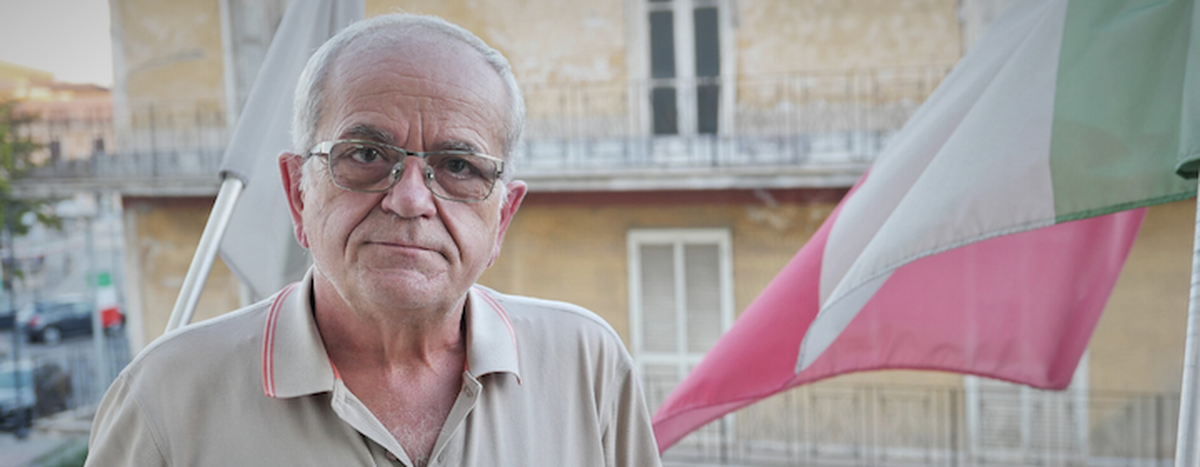
"Repurposing assets isn't just important, it's essential!"(1/3)
Published on
Translation by:
Kate Gallagher“New Landlords” is Cafébabel’s series about citizens who reinvest property from organised crime seized by the justice system. How and why do they create projects for the common good in these places which have, in the past, served the interests of the mafia? In this first part of our inquiry, we go to inland Naples.
When you walk through the streets of Casal di Principe, you feel as if you’re imprisoned. The roads are straight and narrow, the surrounding walls tower above them, and it seems as though pavements have been forgotten about. There is almost no greenery, just cement-grey.
From time to time, between the houses, a vacant lot covered with tall grass appears, where, deep within, stands the skeleton of an unfinished, abandoned multi-storey building. Under the sweltering July sun, the silhouette of an African worker can regularly be seen, zigzagging on their bicycle, probably heading for the convenience store, after working hard in the surrounding fields since dawn.
Twenty years ago, Neapolitan mafia families controlled this area. Present in most sectors of the economy, their influence has shaped the landscape. This mixture of anarchic urbanism, concrete, unfinished real estate projects and egocentric architectural ambition tinged with paranoia, is their heritage.
There is nothing beautiful to see in Casal di Principe. That’s what you think when you arrive in this small town of 22,000 inhabitants. But it is here that - perhaps - one of the most interesting social experiments in Italy in recent years is playing out. We are in the heart of Gomorra territory. It is here that the name was born, adopted by journalist Roberto Saviano for his best-selling book on the Camorra.
It was the priest of Casal di Principe who coined the name : Don Peppe Diana. The one whose smiling face you see displayed when you enter the city. The murdered priest. You could almost say he’s the one who started it all.
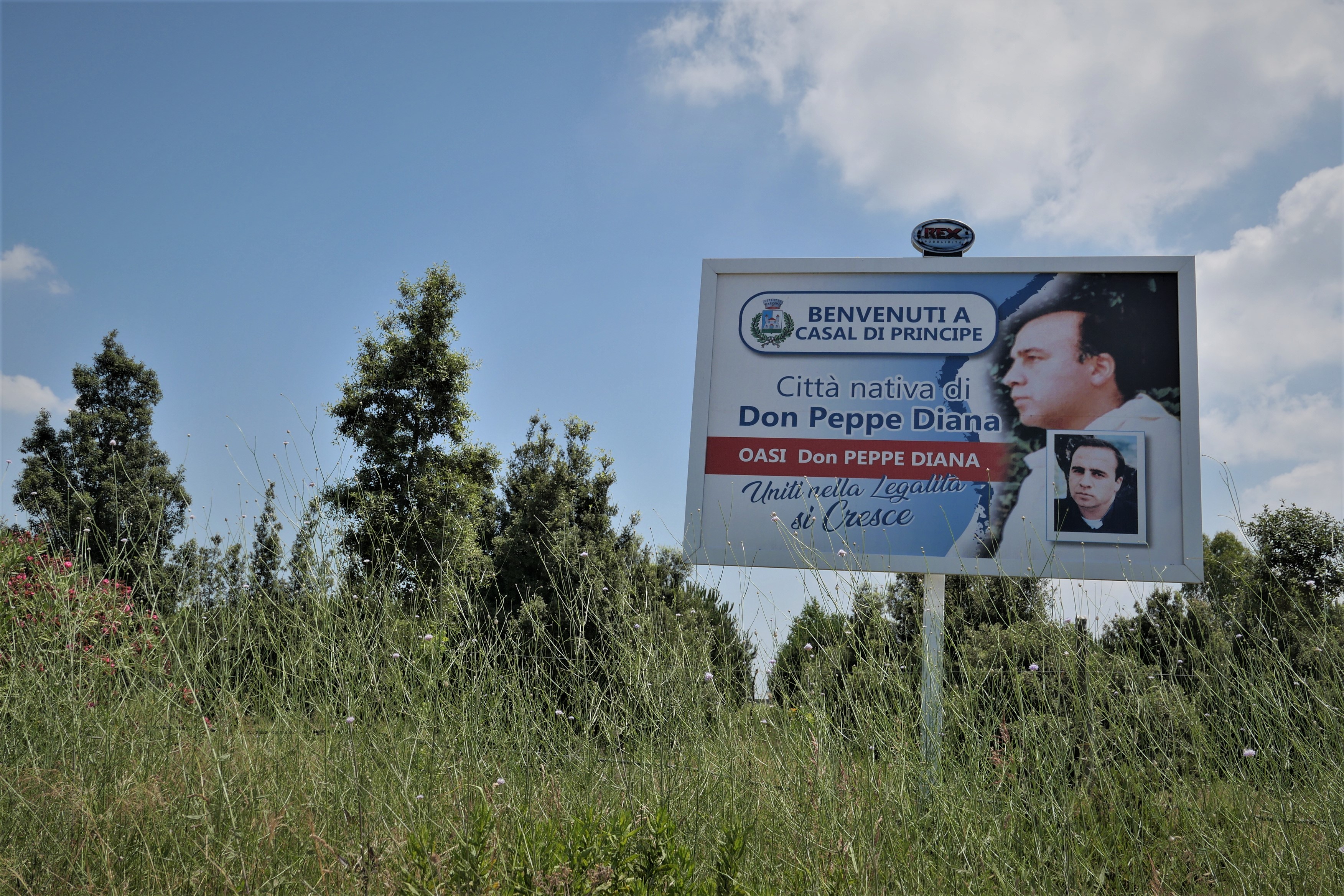
The courtyard of the Casa Don Diana is bustling; something big is happening. Despite the health restrictions, nearly 200 people have come to attend a ceremony to celebrate the anti-mafia citizen commitment, this 4th July, 2021. Several local and national personalities are here, which symbolises, more than anything else, what this fight is really about; the fight against the grip of mafia powers on territory, on the economy, and on people’s minds.
With its Roman temple-like appearance, columns and tympanum, the white building was, in the not so distant past, the home of a clan’s second-in-command. Seized by the courts in 1998 and abandoned for around a decade, the building was first transformed, between 2005 and 2007, into a temporary shelter for minors, managed by the province of Caserta.

But its real rebirth took place in 2015, when it became a pedagogical-cultural centre and a museum, dedicated to the memory of the innocent victims of the mafia. Among them is the town's priest, shot in his church in 1994, because they disliked his determination to mobilise the inhabitants against the Camorra.
Since then, much has changed in Casal di Principe. The heirs of Don Diana can be found by the dozens, with a subtle police presence, within the walls of a mafia boss’ villa celebrating their achievements. Among them, in the province of Caserta, north of Naples, there are about 78 examples of "social repurposing" of property seized from organised crime. In 2021, the province had around 1717 seized properties.. In the municipality of Casal di Principe alone, there are currently 25.
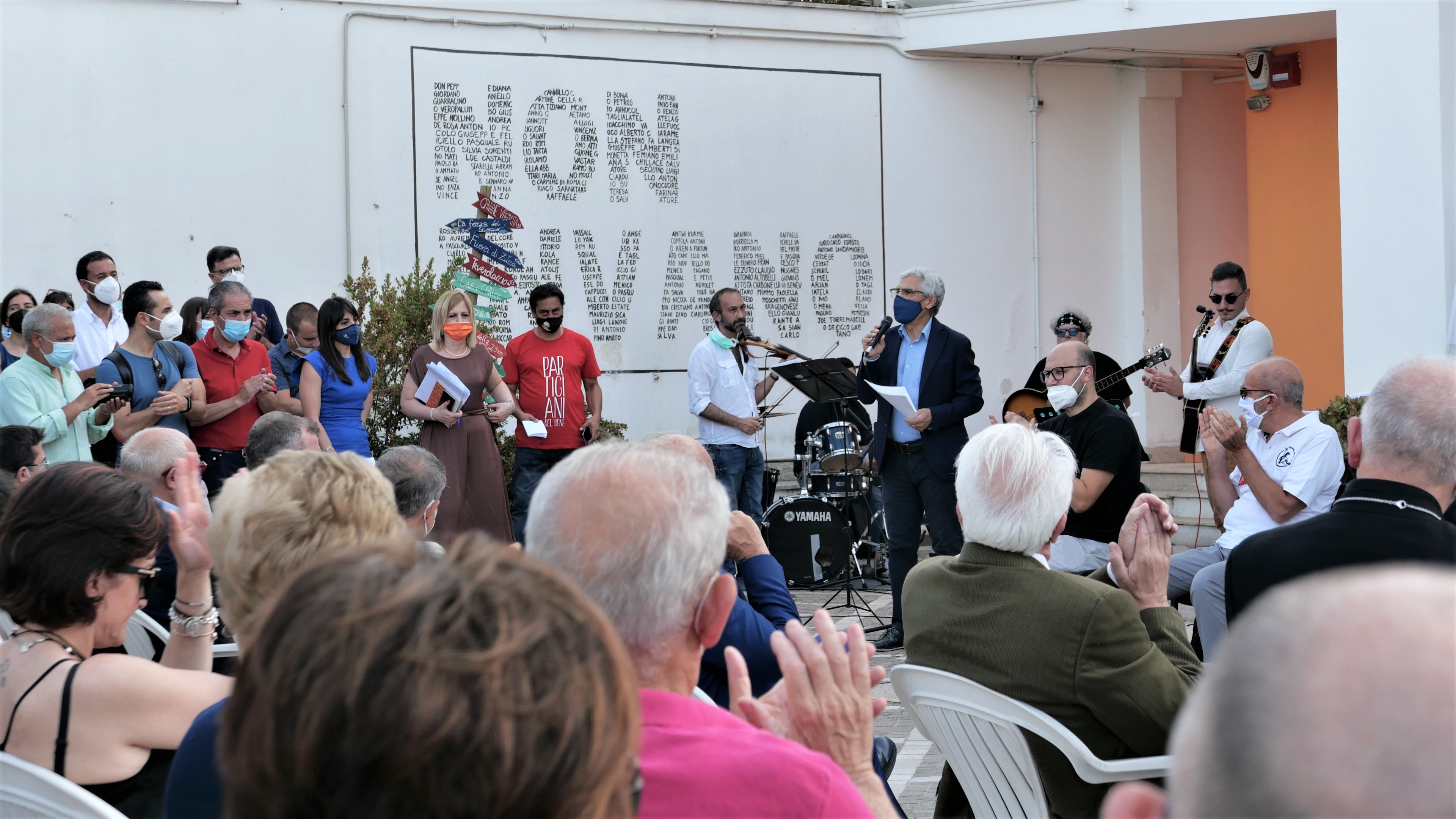
1996 : the law that changes everything
In order to understand how far things have come in this region, and in the rest of Italy, we need to go back a little in the history of the Italian anti-mafia fight.
In 1982, the Rognoni-La Torre law modified the penal code and allowed the justice system to preventatively seize the ill-gotten gains of criminals, especially those suspected of Mafia association. It was a murderous time, and under popular and media pressure, criminal justice methods were strengthened, investigating judges opened cases in droves, and the courts began to confiscate thousands of properties: villas, buildings, warehouses, farms, etc.
The State then finds itself the owner of all these properties (nearly 100,000 assets to date), without really knowing what to do with them. Only the movable assets that have value (cars, machine tools, works of art, etc.) are resold. Civil society is concerned that mafia families could, under an alias for example, recover their former properties. Besides, who would be so reckless as to want to buy and move into the house of a mafia boss in prison?
The State has to manage thousands of buildings and plots of land, which are often unoccupied and deteriorating.
At the same time, anti-mafia movements were building. They brought together community activists, social entrepreneurs, progressive branches of the Church, political representatives, journalists, magistrates, etc. In 1995, Libera, a coalition of NGOs was born and launched a national campaign to demand, by collecting signatures of support, a law allowing seized property to be allocated to projects of public interest.
Only a few months later, Italy adopted this legal instrument, on 7th March, 1996, through Law 109/96. "It isn’t about the State “gifting” this re-allocated property, but rather about returning this property to civil society, the value of which is equivalent to the share of economic and social development that the criminal networks have stolen from society," explains the Italian sociologist Elisabetta Bucolo, in her book "Antimafia, a history of solidarity. Associations and cooperatives against crime". .
The philosophical principles of the public and social use of the seized property were thus laid down, with two focuses: moral reparation and economic and social development. But everything still remained to be done. Despite the fact that much has already been done and trialled, to this day, the process is still in progress, up and down the Italian peninsula. It involves thousands of people every day, who believe that citizens have the means to act in order to reduce the illegal economy and the fear in people's minds.
(Re)building
What can be done with the ex-mafia assets? The Italian experiment shows that the results can be very varied: in Rome, it's an accommodation centre for apprentices, a concert hall; in Castel Volturno, a cooperative that makes mozzarella; in Genoa, a bicycle repair shop, social housing; in Ercolano, near Naples, an anti-mafia radio station; in Casal di Principe, a police station, schools, a care centre for the disabled, etc.
More than 1,000 Italian municipalities have properties seized by the courts and made available to them.
Beyond the symbolic aspects, the repurposing of seized property also has a very pragmatic function that consists of "supporting and extending a large number of public service and social assistance functions, with a view to territorial development," explains Mauro Baldascino, a teacher, activist and consultant to municipalities on this subject in the Caserta region. It is a tool that provides concrete solutions to the inhabitants.
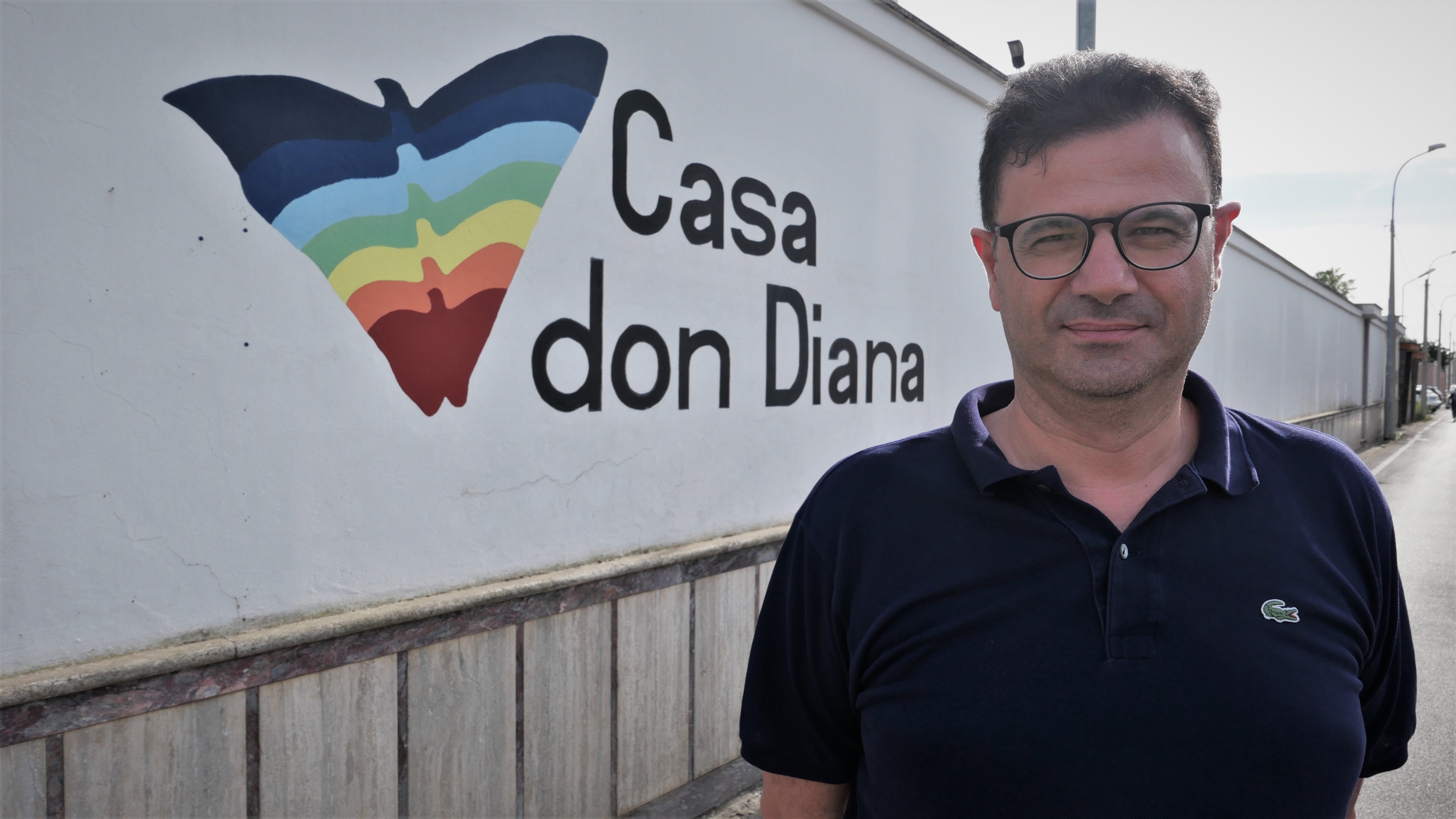
Projects are born in the areas around these places and are often borne out of a need and an opportunity combined. When we take a closer look, we learn that there is often a very personal story behind the project: a father who is looking for support solutions for his autistic son, neighbours who would like a park for their children, a parish or an association that would like premises to be able to expand its charitable activities, etc. There are also activists and campaigners who want to work on awareness-raising projects (a cultural centre, a radio station) or social entrepreneurship projects to offer legal economic alternatives, often to people who are unemployed.
But all of this is not done without the support of public authorities. At the national level, the assets are managed by the ANBSC (Agenzia nazionale per l'amministrazione e la destinazione dei beni sequestrati e confiscati alla criminalità, belatedly created in 2010).
The local authorities (region or commune) can apply to the ANBSC to have the seized property entrusted to them for management. And it is they who make them available to project leaders, be that for charitable or business use, or use them to set up their own public services (schools, library, police station). A lease is put in place, usually for 3 to 5 years, sometimes longer. In principle, there is no rent to pay, only the running costs. This represents a real asset for the cash flow of associations or local public finances.
When studying the examples of public and social use of seized property across Italy, it is striking to see how each of them has a different story behind their use. It depends first of all on the nature of the property, which ranges from a luxurious villa to a commercial space transformed into a storage room, from high-quality agricultural land to shabby apartments used for prostitution and drug trafficking. It can sometimes be in bad condition, because it has been abandoned or ransacked by the former owner, furious at having been dispossessed.
Sometimes, the convicted person still lives in the property after the court decision! Then, the motivation of public authorities to support these projects is fundamental.
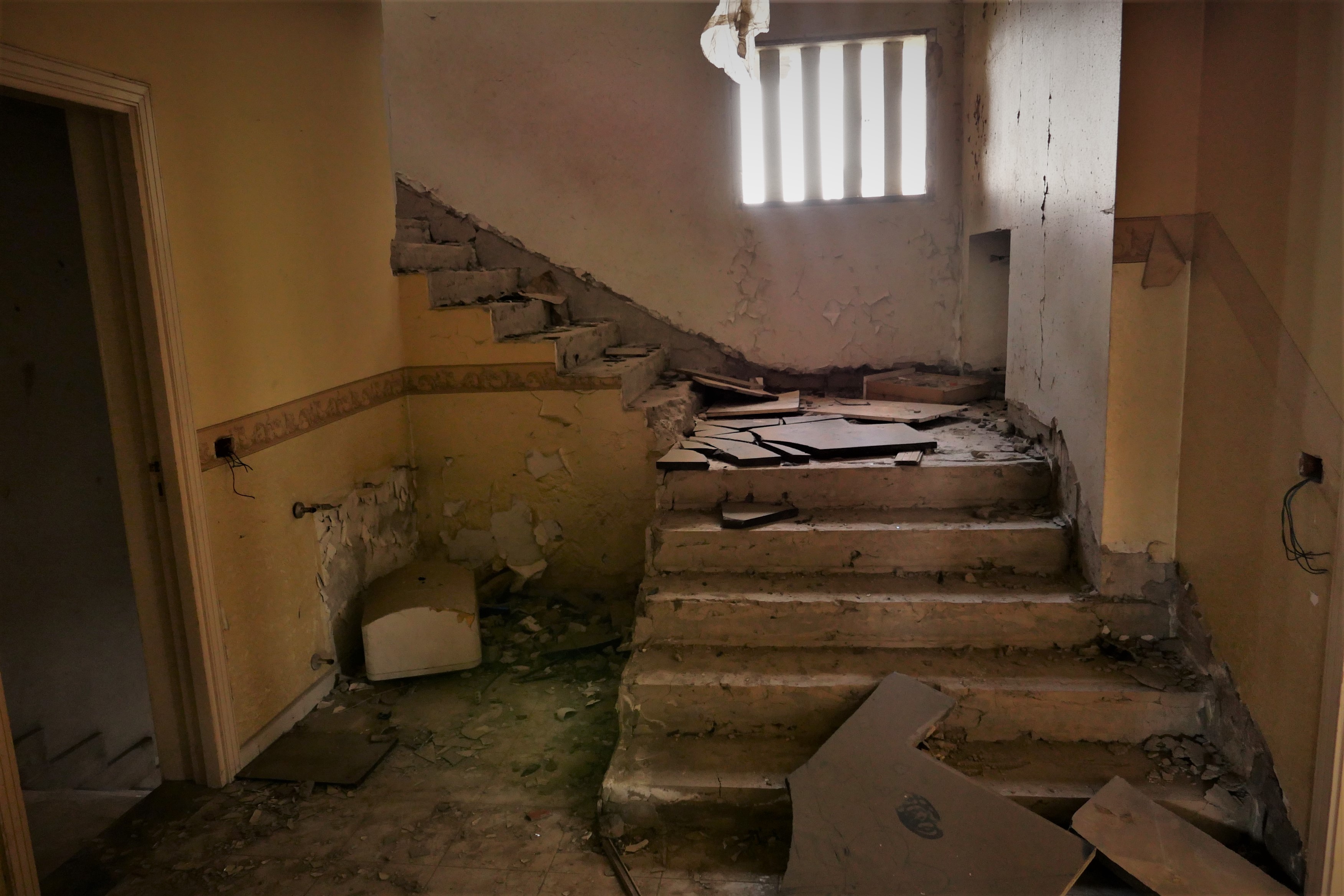
An alternative community to the mafia
Renato Natale is a veteran of the anti-mafia struggle. The mayor of Casal di Principe has received death threats several times during his long career as a politician and anti-mafia activist. At 71 years old, he saw the rise of the violence of the camorrists in the 1980s, their corruption and assassinations.
"The Camorra had been there around for a century, stealing from, and intimidating people, but its members were isolated from society; marginalised. In the second half of the 1970s, it changed, it began to take an interest in politics and drugs. It seeped into the general political and economic fabric. ".
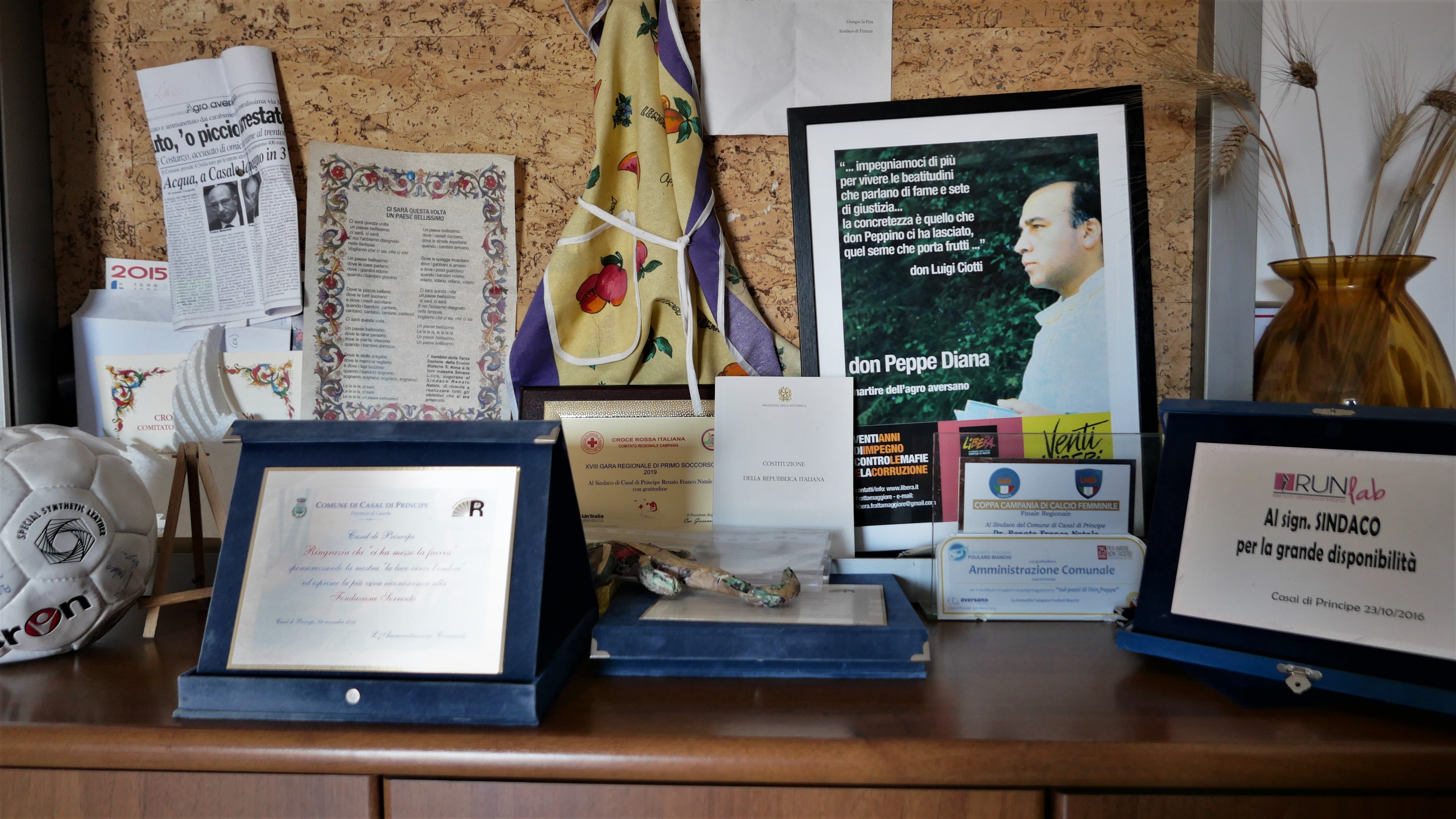
He, the communist doctor, and believer, who has been fighting against the mafia since the end of the 70s, sides with priest Don Diana, to denounce the violence. ."He was marked by the death of an innocent man, caught in a shooting in 1991. From that moment on, he fought against the mafia in a continuous struggle. Our two strategies were parallel. Mine on the political level and his on the social change level.”.
Renato Natale, member of the Italian Communist Party since 1976, was elected mayor for the first time in 1993.
"It was the natural consequence of my political commitment," explains the man who was also branch secretary in Casal di Principe.
But the experience was short-lived. The local clan of the "Casalesi” infiltrated the city council, and he was stripped of his mandate, shortly after the assassination of Giuseppe Diana. ".They had planned for me to die in a fake road accident, but could not carry out that plan. So they decided on a political death."
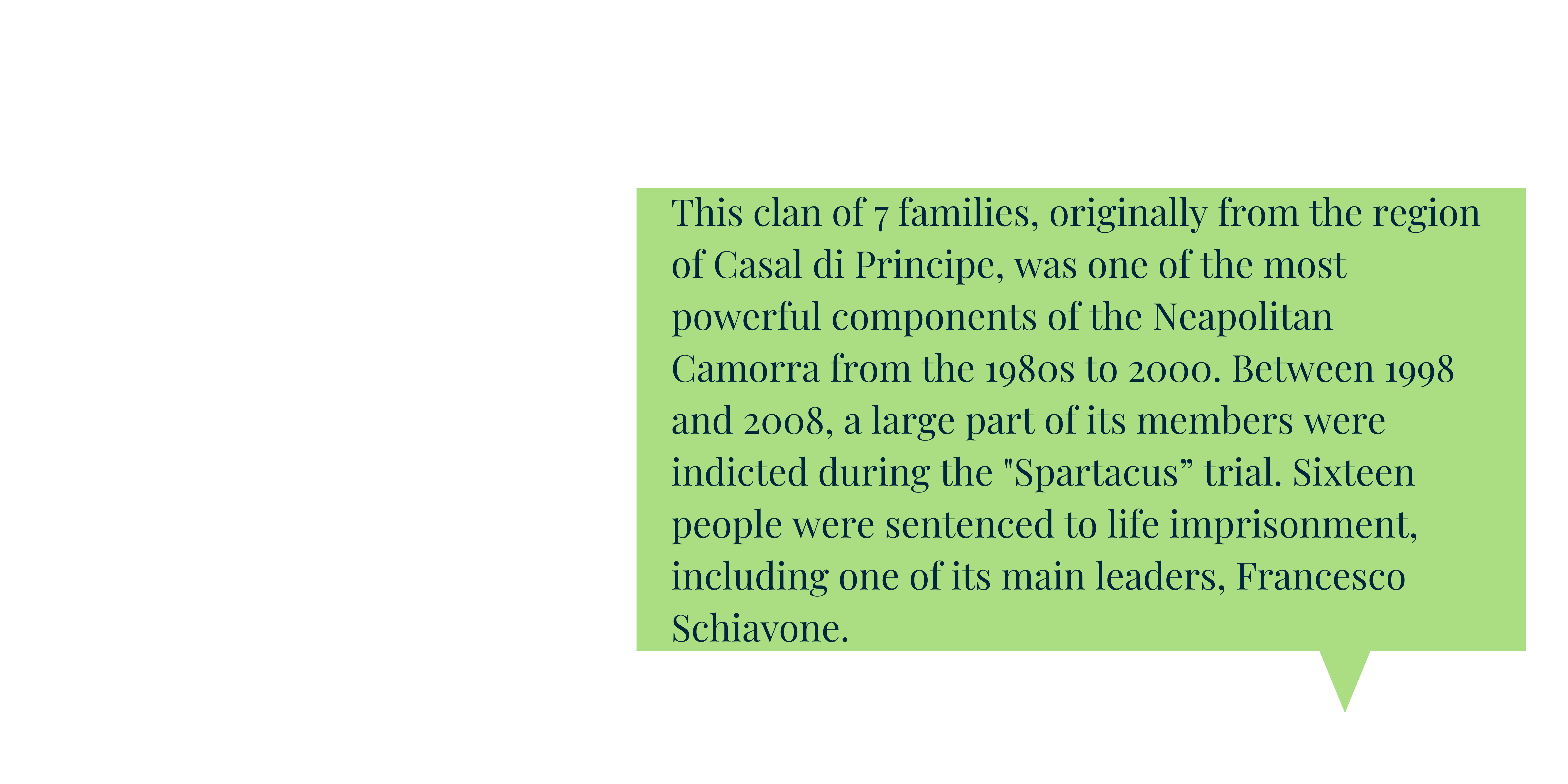
Committed to Libera, he participated in the campaign to obtain the law on the USBC. In 2000 he participated in the first social repurposing of a seized property in Casal di Principe: the University for Legality and Development, a popular education centre (now closed).
He returned as mayor from 2014 and the USBC became one of the priorities of his term (and then the second, after his re-election in 2019). "It's one of the fundamental tools in fighting crime. You need it to build an alternative community to the mafia."
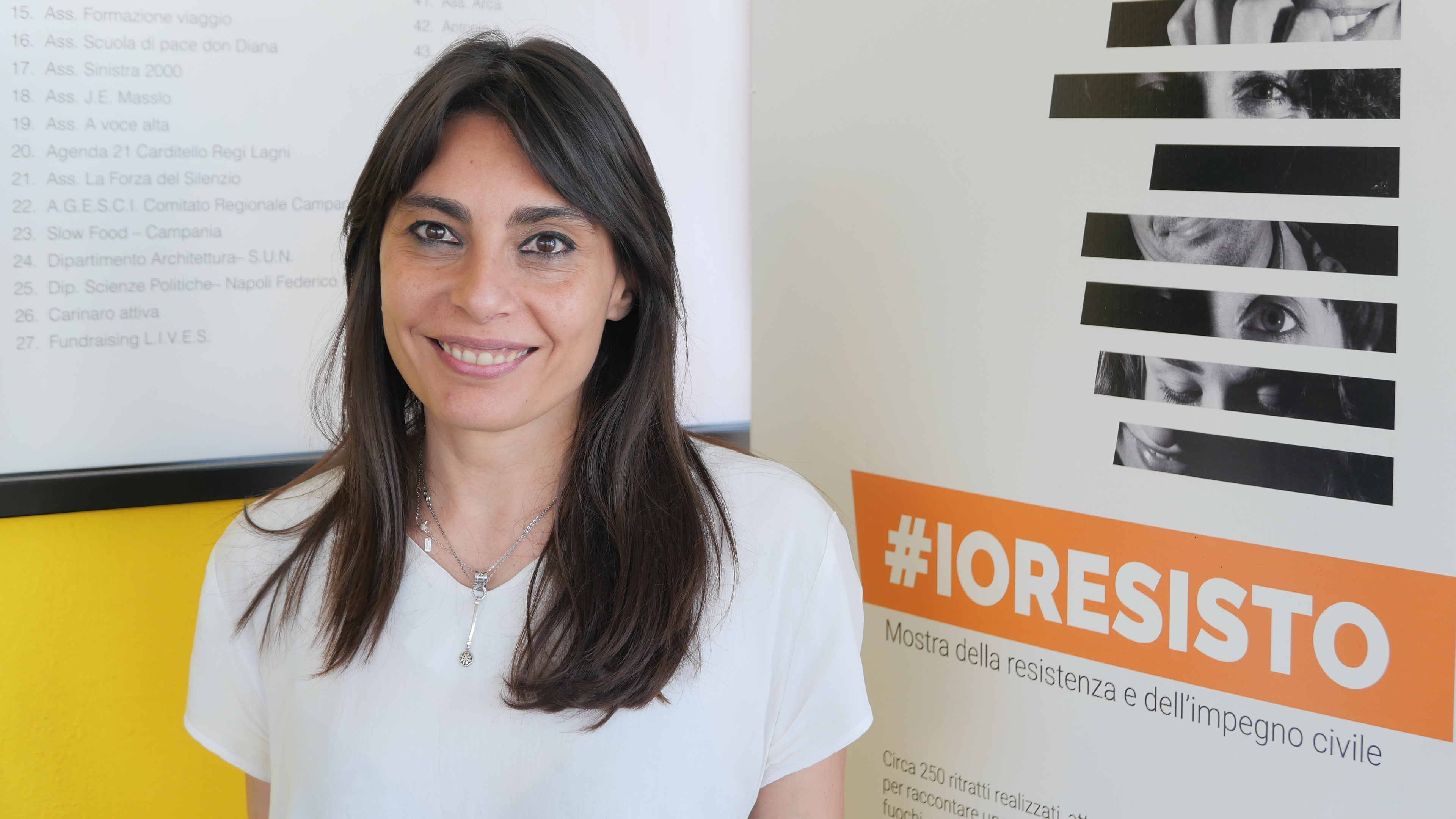
While he refuses to be heroic for his commitment to making USBC an exemplary reality in the region, all local stakeholders attest that the support of city officials has been indispensable in accompanying the citizen movement.
Journalist Tina Cioffo has been covering the news of seized property for years. She testifies that things are, for example, much less advanced in Casapesenna, neighbouring town of Casal di Principe. "Casapesenna does not know the redemption, the rehabilitation of other cities. It is a closed city, still controlled." She adds, "Repurposing property is not important, it is essential! It allows for the construction of a healthy, ethical and supportive community through social repurposing and therefore an economy that would be an antidote to a criminal economy."
[To be continued in Episode 2 on the impact of the social use of property seized from the mafia.]
This article is the first in the three-part series, "New Landlords".
This project was created in collaboration with researcher Fabrice Rizzoli, within the framework of the research project COESO (Collaborative Engagement on Societal Issues) a meeting point between the humanities and social sciences and participatory research. COESO is coordinated by the Ecole des Hautes Etudes en Sciences Sociales and is funded by the European research programme Horizon 2020.
For more information on the behind the scenes: https://usbc.hypotheses.org/
Cover photo: Renato Natale, Mayor of Casal di Principe, in July 2021. Mathilde Dorcadie
Translated from « Réutiliser les biens, ce n’est pas important, c’est fondamental ! » (1/3)



